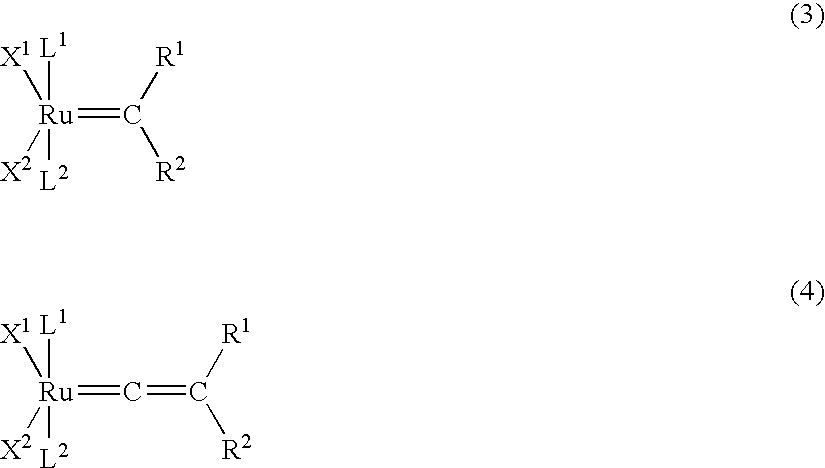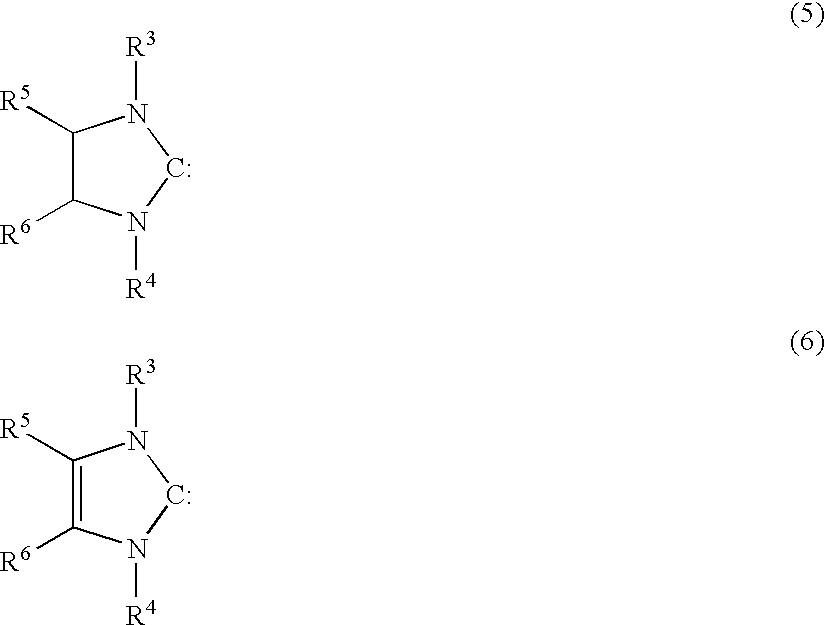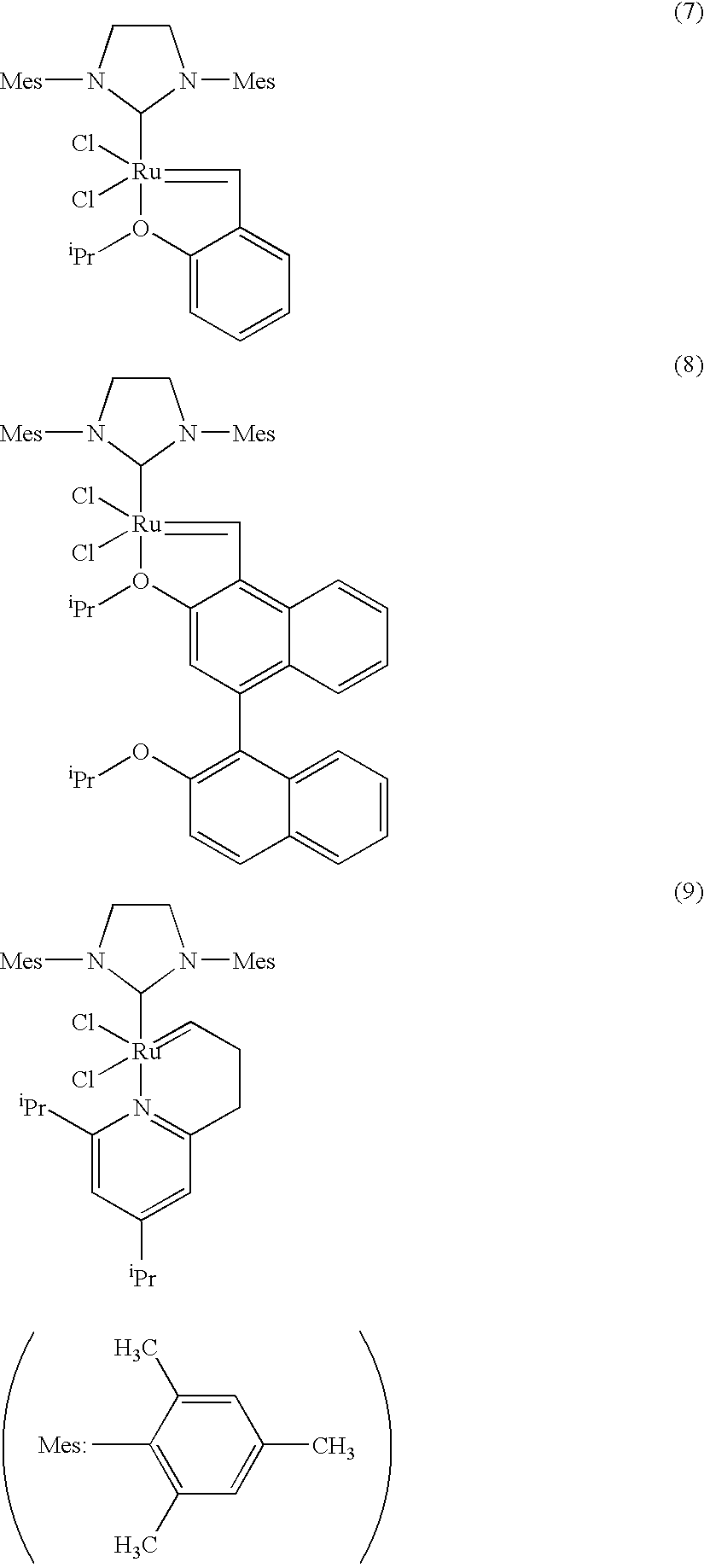Method of manufacturing thermoplastic resin, crosslinked resin, and crosslinked resin composite material
a thermoplastic resin and crosslinked resin technology, applied in the direction of synthetic resin layered products, adhesive processes with surface pretreatment, textiles and paper, etc., can solve the problems of copper foil peeled off, unduly worsening the working environment, and complicated methods, and achieve the effect of efficient production of post-crosslinked thermoplastic resin
- Summary
- Abstract
- Description
- Claims
- Application Information
AI Technical Summary
Benefits of technology
Problems solved by technology
Method used
Image
Examples
reference example 1
Preparation of Catalyst Solution
[0147] A catalyst solution was prepared by dissolving 51 parts of benzylidene(1,3-dimesitylimidazolidin-2-ylidene) (tricyclohexylphosphine) ruthenium dichloride, and 79 parts of triphenylphosphine in 952 parts of toluene in a glass flask.
example 1
[0148] A glass flask was charged with a monomer solution of 2,800 parts of tetracyclo[6.2.1.1 3,6.02,7] dodec-4-ene, 1,200 parts of 5-ethylidene-2-norbornene, and 6,000 parts of dicyclopentadiene, and 909 parts of styrene as a chain transfer agent. Then, 39 parts of the above catalyst solution was added with stirring to obtain a polymerizable composition a.
[0149] This composition a was instantaneously cured when injected onto an iron plate heated at 150° C. The cured product was immediately removed from the iron plate to obtain a polymer in the form of an odorless film. The film had a thickness of 0.1 mm and was soluble in toluene, indicating that the polymer was not crosslinked. The amount of residual monomers in a toluene solution of the film was measured using gas chromatography to confirm that the polymerization reaction rate was 98.9%.
[0150] After preserving the film for one week at room temperature in the air, the polymerization reaction rate was determined using the same me...
example 2
[0151] The film obtained in Example 1 was placed on a plate heated at 200° C. Once melted on the plate, the film became non-flowable due to crosslinking. The resulting polymer was not dissolved in toluene, confirming that the polymer was crosslinked.
PUM
| Property | Measurement | Unit |
|---|---|---|
| Temperature | aaaaa | aaaaa |
| Fraction | aaaaa | aaaaa |
| Ratio | aaaaa | aaaaa |
Abstract
Description
Claims
Application Information
 Login to View More
Login to View More - R&D
- Intellectual Property
- Life Sciences
- Materials
- Tech Scout
- Unparalleled Data Quality
- Higher Quality Content
- 60% Fewer Hallucinations
Browse by: Latest US Patents, China's latest patents, Technical Efficacy Thesaurus, Application Domain, Technology Topic, Popular Technical Reports.
© 2025 PatSnap. All rights reserved.Legal|Privacy policy|Modern Slavery Act Transparency Statement|Sitemap|About US| Contact US: help@patsnap.com



